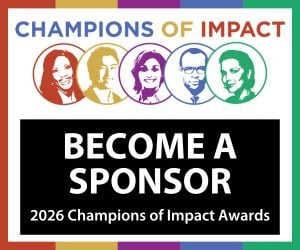One quarter (24.2 percent) of Indianapolis/Marion County’s labor force, individuals over age 16 ready and able to work, is African-American. Nearly one-seventh (13.7 percent) of the Indianapolis metro area’s labor force, is African-American.
These two basic statistics are about to open a major discussion of how diverse Indianapolis’ workforce is. My initial analysis of the Census Bureau’s Equal Opportunity (EEO) Report, the first issued in a decade, shows wide disparities between how well integrated and diverse key employment groups and categories are here.
The Census EEO Report is prepared by the Census Bureau on behalf of the Equal Employment Opportunity Commission (EEOC), the Federal Departments of Justice and Labor, and the Office of Personnel Management.
The data are compiled from the Census’ annual American Community Surveys and covers 2006 to 2010. It reflects the three good employment years and two years of the great recession.
First some basics: The Census EEO Reports says there are 477,540 persons in the workforce in the city/county; 307,155 white non-Hispanics (64.3 percent); 115,380 African-American (24.2 percent), 36,955 Hispanics (7.7 percent) and 9,160 Asians (1.9 percent).
In the metro area the total workforce is 910,210; including 705,940 white non-Hispanics (77.6 percent); 124,770 African-Americans (13.7 percent); 47,190 Hispanics (5.2 percent) and 18,805 Asians (2.1 percent).
That’s the diversity of the labor force, the potential workforce. What does the Census EEO say about the actual diversity of those working within America’s 11th largest city?
The EEO report estimates there are 577,600 jobs within the borders of the city/county. Of that number 74.8 percent are white non-Hispanics; 15.8 percent are Black; 5.6 percent are Hispanic and 2.3 percent are Asian. As you can see, Blacks are underrepresented in the racial diversity of those working at jobs in the city/county.
But analyzing the occupations where Blacks are employed reveals great opportunities and great challenges and problems.
Remember I said that 24.2 percent of the city/county’s labor force is African-American. But, Blacks are underrepresented in a variety of professional areas. Areas where the high paying jobs are.
Blacks comprise just 11.0 percent of all officials and manager jobs in Indianapolis; 9.2 percent of professional occupation jobs; 14.5 percent of technical occupation jobs; 15.1 percent of sales worker jobs; 9.2 percent of craft worker jobs.
Blacks occupy just a fifth (20.1 percent) of administration support jobs in Indianapolis/Marion County; nearly as much (19.8 percent) of laborer jobs. And Blacks are overrepresented in the service worker category with over a quarter (27.7 percent) of those jobs.
The past several years, city leaders have bragged about attracting high tech, high wage jobs in the life sciences sector. Yet the Census EEO says that diversity doesn’t really exist in these specialized jobs categories.
Just 11.5 percent of Indianapolis Blacks are employed in health care practicioner professional jobs. Just one-in-eight (12.8 percent) of those employed in science, engineering and computer professional jobs are Black.
The Census EEO Report gives Indianapolis’ African-American leadership a template to evaluate diversity among Indianapolis employers and employment categories. The question is whether our Black leadership will use this template to force meaningful change and improvement in increasing racial diversity among Indianapolis’ employers or accept a status quo that continues to red line Blacks out of meaning employment opportunities.
What I’m hearing in the streets
Last week, at an IUPUI symposium named after Keith Bulen, the GOP architect of UniGov and political godfather of Richard Lugar and scores of other Indiana GOP stars, my good friend and fellow Indianapolis Business Journal columnist/owner Mickey Maurer expressed the GOP mantra that supporters of Superintendent-elect Glenda Ritz won because of dirty political tactics.
Gov. Mitch Daniels repeated the charge in a Washington speech before education reformers, accusing Ritz supporters of “anything goes politics” and “illegal, but creative, use of public resources.”
State GOP leaders told The Indianapolis Star they’d received proof teachers/Ritz supporters campaigned for Ritz and against incumbent Dr. Tony Bennett during school time and using school email accounts.
I told symposium attendees that Bulen would’ve loved Ritz supporters’ alleged tactics as he did the same in winning GOP campaigns back in the day.
It’s odd, though, that if GOP leaders had, before the election, evidence of illegal and “dirty” campaigning by Ritz’ supporters, including campaigning on school time, why didn’t they go public and cry foul?
Campaigns always do that when opponents play fast and loose. Did Republicans really have this proof before the election? Or were they so overconfident that Bennett was unbeatable; that Ritz had no chance?
I’m hearing that Indiana Republicans, smarting over Bennett’s defeat, are taking aim at Hoosier teachers. Preparing possible legislation to crack down on teachers’ rights to campaign on and maybe off school time. Punitive actions that could engage an ACLU lawsuit.
* * * * *
It was a mesmerizing conversation at Ball State University as David Letterman engaged Oprah Winfrey in a revealing conversation before thousands in Emens Auditorium.
Letterman probed how Winfrey, who suffered much abuse and heartache in her early years, overcame it all to become the mega success she is today.
I saw first hand Oprah’s intimate charisma, appeal and the strength of her convictions. I also saw that behind the comedic mask, Letterman is an individual with deep knowledge and seriousness you don’t see on TV.
Oprah’s Harpo Productions was taping it so I expect to see the conversation on her OWN cable channel.
Oprah was last in Central Indiana in 1986 on the eve of her national show when she appeared at the State Fairgrounds and at the Madame Walker; where I was privileged to meet her.
Scores of groups, including Black Expo, have tried to get her back, but Ball State and David Letterman did. Congrats to them for letting us see deep into the soul of a legend.
See ‘ya next week.
You can email comments to Amos Brown at acbrown@aol.com.




